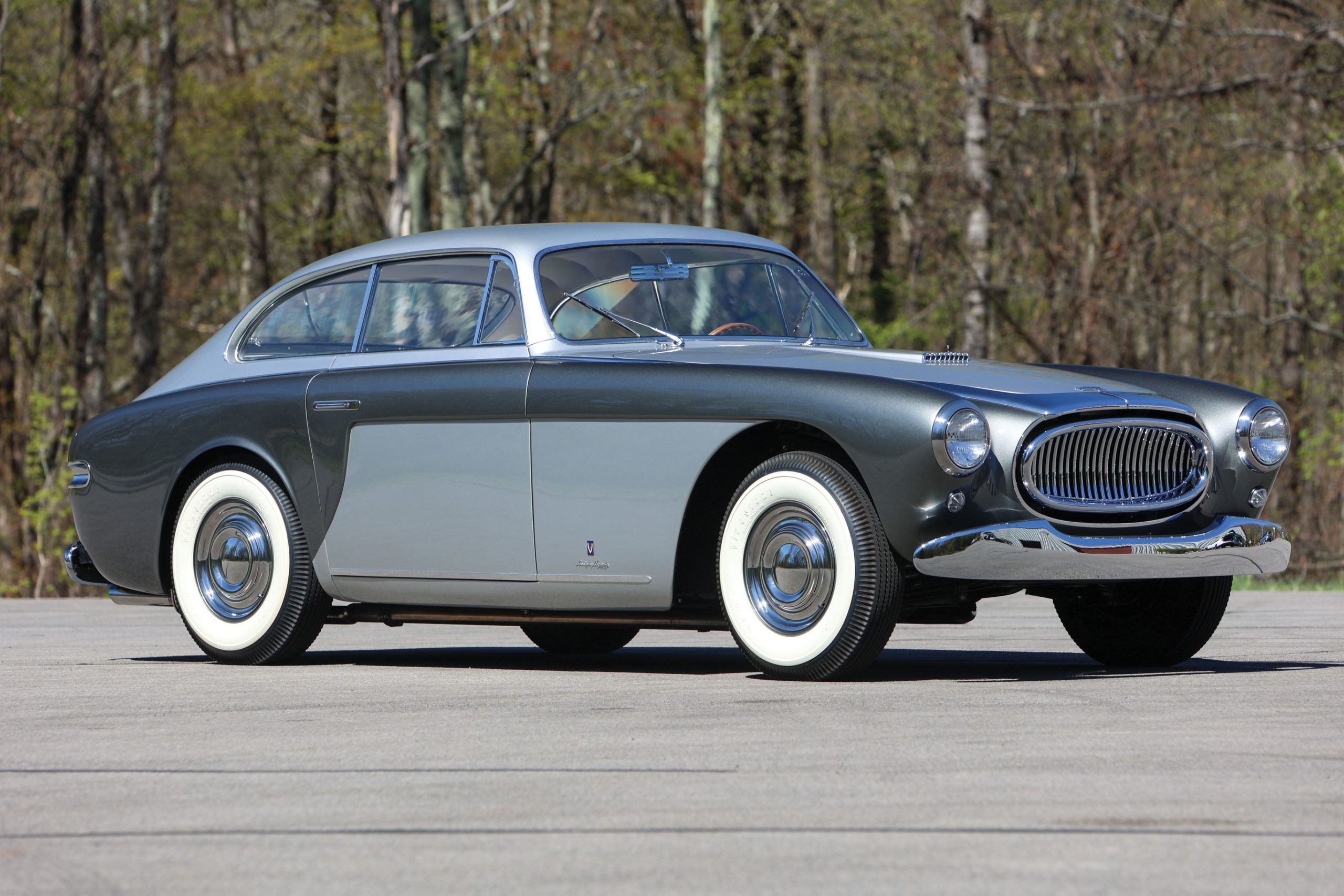SCM Analysis
Detailing
| Vehicle: | 1954 Cunningham C-3 Vignale Coupe |
| Years Produced: | 1951–54 |
| Number Produced: | 27 |
| Tune Up Cost: | $175 |
| Chassis Number Location: | Engraved on brass plaque mounted on firewall tube (driver’s side) |
| Engine Number Location: | Stamped in front of block behind water pump |
| Alternatives: | 1950–52 Aston Martin DB2, 1954–57 Jaguar XK140, 1955–58 Bentley Continental |
This car, Lot 857, sold for $945,500, including buyer’s premium, at Broad Arrow Auctions’ sale in Gloversville, NY, October 15, 2022.
Sportsman Briggs Swift Cunningham built a total of just 36 sports and racing cars bearing his name between 1950 and 1955. This fact often causes marque owners to give the tongue-in-cheek remark that Ferrari GTOs — at 39 examples — were “mass-produced.” Of those 36 Cunninghams, 35 still exist, which is pretty remarkable.
Le Mans-style luxury
Cunningham became a reluctant manufacturer of 27 street cars, a homologation requirement for Le Mans. The resultant C-3, also known as the Continental, was originally intended as a dual-purpose sports car that could be driven to the track, raced, then driven home. But by the time the car became a reality, it had morphed into an ultra-luxury 2-seater.
The first two C-3s, a coupe and a roadster, were constructed entirely in West Palm Beach, FL. The chassis were modeled after the company’s Le Mans C-2R racers, powered by a Chrysler 331-ci Hemi V8 engine, their aluminum bodies built in-house. But this process proved expensive and time consuming, so the following 25 cars (20 coupes, five cabriolets) were bodied by Vignale in Italy, based on a svelte Giovanni Michelotti design.
Retailing for between $10,000 and $15,000, the C-3 was the most expensive American car at the time, selling for roughly three times the price of a $3,500 Cadillac Coupe Deville. Speaking of which, the first four C-3s, s/n 5206 through 5209, were equipped with 3-speed Cadillac manual gearboxes. The balance of production, including s/n 5442 featured here, had rather un-sporty Chrysler Fluid Torque Drive semi-automatic gearbox.
A celebrated example
Jim Taylor purchased our subject car in 2003, after which it spent a number of years in several restoration shops en route to becoming probably the most celebrated C-3 extant. In the course of four years, the car won second place in the Cunningham class at Pebble Beach (2015), Best of Show at the Misselwood Concours in Massachusetts (2016), first in class at The Quail (2017), and was displayed as part of the featured Cunningham class alongside 32 other cars at the 2018 Greenwich Concours.
In its two-tone paint scheme, it is drop-dead gorgeous, even if the large metallic flakes in the gray paint are likely not period-correct. The off-white leather interior looks brand new because it is. Even though Taylor has a reputation for driving his freshly restored cars, this particular one has remained a trailer queen.
Cunninghams are significant cars, at once both American hot rods and Italian-bodied exotics. They often get compared to Shelby Cobras, but C-3s are in many ways more impressive. Carroll Shelby is often given credit for “building” the Cobra, when in reality, he took an engine from Ford and installed it in coachwork constructed by AC. Cunninghams, on the other hand, were absolutely built by hand. Every component — the windshield-wiper motor, horn, gauges, tie-rod ends, shock absorbers, heater controls, etc. — had to be sourced, then adapted into the car’s overall design. When Cunningham couldn’t find a 4-barrel carb or a floor-shift mechanism — basically because neither of these items existed in the early 1950s — he manufactured his own. Even the racing stripes that later became famous on Shelby’s cars were “borrowed” from Briggs Cunningham’s race cars. (Don’t believe it? Google “Cunningham stripes.”)
Short supply
Every major American car collection should have a Cunningham. But with so few cars in existence, most collectors will need to settle for an alternative because C-3s seldom change hands.
Except for a project C-3 coupe that sold for $320,000 in 2018, concours-quality cars regularly trade in excess of $1,000,000. The last three to sell at auction all changed hands for between $1,100,000 and $1,200,000, and none of them had the concours credentials of our subject car. That makes this C-3 quite well bought, especially knowing Taylor’s reputation for wanting the best in the world and being willing to pay for it. Hopefully the new owner will continue to show the car, but also enjoy it on the road, where its torquey engine and automatic transmission make it an ideal vintage tour entry. ♦
(Introductory description courtesy of Broad Arrow Auctions.)
